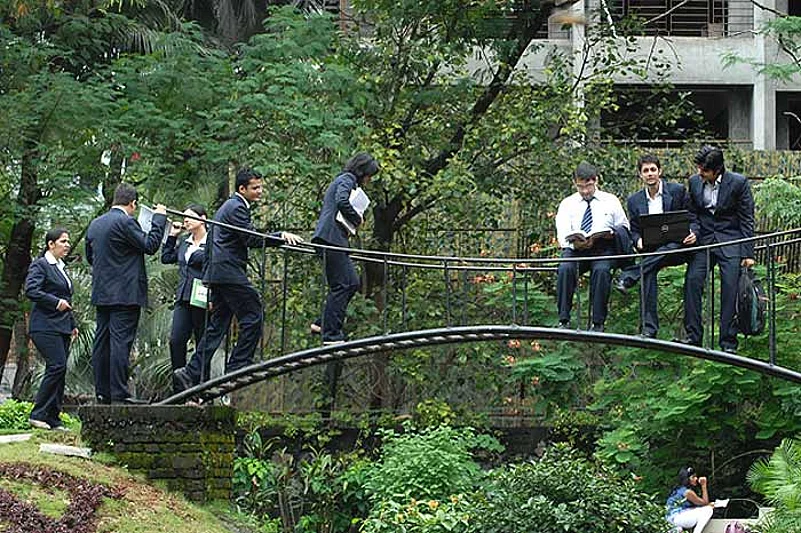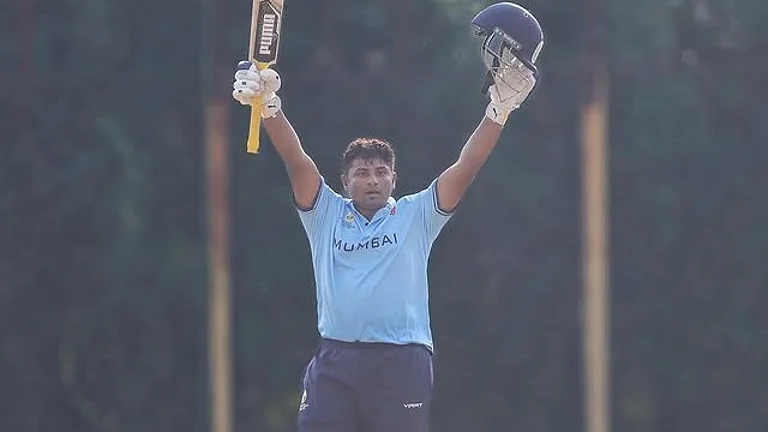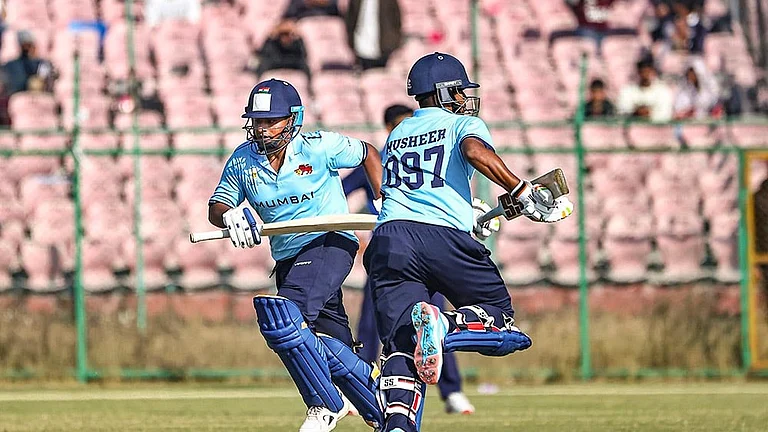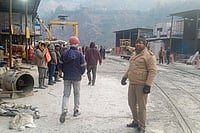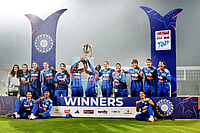| The Old MBA | The New MBA | |
|
| |
When Dilip G. Shah graduated from IIM Ahmedabad in 1966, cautious optimism defined his state of mind as he surveyed the corporate sector. Everywhere he looked, options were limited for this mint-fresh MBA from IIM-A’s first batch. The Indian economy was kept on a tight leash by the government and the play of market forces was unheard of. Every sector was fiercely regulated. Jobs abroad were not yet a concept for Indian MBAs—all Shah and his batch could hope for was to land a decent job in a multinational.
Much of his time at India’s now premier management school was spent learning the rules and regulations associated with dealing with the government. Teaching methods were primitive and their tools were just books and journals. Says Shah, “We were taught critical evaluation of various situations and decision-making in imperfect conditions. There was no IT or internet or Google. We only had books to refer to.”
For Chinmay Athaley, a final year MBA marketing student at Mumbai’s Welingkar Institute of Management Development & Research, it is a different India. A product of the liberalised era, his world is totally different—one where most things are decided by market forces, where almost all sectors are open and where the audience is the entire world. Managing the authorities is just a small part of a much larger game. “From a captive domestic market, we are now facing a global market. We have to be exposed to many industries and are expected to perform in any situation,” he says, sitting in a class packed with technological tools.
Meet today’s MBA—smart, young, independent and more informed than the ones who walked through the B-schools’ hallowed portals decades ago. If those of Shah’s vintage focused on dealing with a controlled regime, it’s a free-for-all today, where MBAs have to fend for themselves as masters of all trades with clear-cut objectives to achieve at any cost. Says Shah: “Then, MBAs were being trained to become professional managers. Today, they are independent and have no inhibitions. Many are also becoming entrepreneurs.”

Old school IIM-A grad Dilip Shah had a harder go of it in the ’60s. (Photograph by Apoorva Salkade)
And handling this new breed is a tough ask of teachers. Abbasali Gabula, deputy director at S.P. Jain Institute of Management, Mumbai, says: “Teaching today’s students is extremely difficult. They are well-informed, connected and networked. They come from a good support system of education in the family. It’s a totally different breed.” Abbasali feels that the MBA-ers born post the 1990s have distinct abilities that were not observed among the older generation. These include improved cognitive processing skills, better management of working memory, the ability to shift from task to task and a mentality better equipped for coping with uncertainty.
Last year, the Harvard Business School, in a project to overhaul MBA education, articulated that an international focus was essential for management education. Many B-schools in India had already started walking down this track by bringing in a global perspective to their curriculae. Consequently, the graduates of today have a global outlook, which the MBAs of yore clearly lacked. Says K.T. Chacko, director, Indian Institute of Foreign Trade (IIFT), Delhi: “Today, unless an MBA can look at an issue with a global perspective, he will be left behind in the race.” Experts also assert the importance of a multi-disciplinary approach as B-schools are moving away from a silo-based education system to one where the walls between specialisations are fast blurring.
B-schools are increasingly introducing new courses to suit the needs of the industry. While some of these courses are broad-based, some, like retail chain management, are extremely niche. Not everyone, though, agrees with this new trend that they say is “restricting the MBA’s capabilities”. Says Shah: “Sector-specific or niche courses are creating specialists, but restrict their skills just to that specific area. Big companies like HUL and Pfizer routinely put their executives through everything from manufacturing to marketing and audit so that complete managers are developed.”
But, across the B-school spectrum, professors find the internet and Google to be their biggest adversary and challenge as they face students. Says Ganesh Raja, director, ITM Business School, Navi Mumbai. “Today’s MBA is more informed and intelligent. So the pedagogy and information has to be designed accordingly as students cross-tabulate a professor’s lecture and pit it against information available from across the world by checking it on the internet. Today, professors can no longer talk with a bottom-up approach but have to adopt a top-up one wherein they add on to what the students already know.”
What has shaped this attitude and mindset of the new MBAs is the cut-throat competition for seats in the country. Knowing full well that the MBA degree is a first-class ticket to a job and the good life, the rush to get into an MBA school has intensified. A decade ago, IIM-A received about 30-40,000 applications. Today, that number has ballooned to 2.5 lakh. The story at other B-schools, big and small, is no different. But seats in premier institutions have not matched up to the rising demand.
Some institutes are trying to address this by opening satellite campuses in other cities. So, if a student hasn’t managed to gain admission into the main campus, he/she can take a shot at the institute’s satellite campus. In this, the smaller institutes have taken a lead. Pune’s Symbiosis, for instance, has set up satellite campuses in Nasik, Chennai and Bangalore among other cities. Similarly, SRM University has a satellite campus in Modinagar, near Delhi. Now, even the premium institutes are opening satellite campuses. IIM Lucknow has a campus in Noida, while IIM-A is planning to open one in Hyderabad. Even the new IIM at Kozhikode is planning to set up a new campus in Kochi.
The cost of receiving an MBA education has also hit the roof. Back in ’91, students paid under Rs 15,000 for the duration of their stay at IIM-A. Today, it’s risen to a staggering Rs 14 lakh. Barring the handful of government-owned B-schools, the average fees ranges anywhere from Rs 5-8 lakh. While this is being fed by the availability of easy bank loans, the new MBA also has a clear aim to get that money back many times over once they join work. “The aspiration level of today’s MBAs is sky high. Twenty years ago, they were down to earth and more humble,” says former IIM-A director Bakul Dholakia.
With the multiplicity of entrance examinations to various B-schools creating a lot of confusion and adding to the costs for students, there is a trend among leading institutions to standardise the entrance examination process. Of the top 75 colleges in the Outlook survey, 53 have opted for the Common Admission Test (CAT) that also selects candidates for the IIMs. Another 27 have opted for the Management Admission Test (MAT). At present, there are more than 25 different admission tests for B-schools, some of them for just one or two institutes. The new system seeks to change that by providing a more effective measure of capability and scores in the entrance tests.
For all the tinkering—and some of it is most assuredly for the better—many in academic and industry circles question the quality of the graduates who emerge out of this dog-eat-dog environment. Says Pritam Singh, director-general of International Management Institute (imi), Delhi: “Today’s mushrooming of B-schools and mass production of MBAs is a big concern. MBAs today are worse than MComs and companies prefer bcas to MBAs. Companies are questioning even students from good B-schools on their entrepreneurial skills and zeal. They are just good target achievers but have no innovative skills.” What Singh feels is lacking in today’s crop of MBAs is the ability to go beyond the set examples and fixed answers.
The way MBAs are being trained at B-schools has also come under scrutiny of educationists who have raised questions about the quality of teachers at premier institutions, an issue Union rural development minister Jairam Ramesh took a lot of flak for. Says Dholakia: “There is a huge gap between the quality of students and the quality of teachers. In the top 100 institutions, only 30-40 per cent of the faculty would be up to the mark.”
But B-schools across the country continue to tom-tom their 100 per cent placement record year after year—something that is easily lapped up by students and parents. With the industry desperate for talent and the B-schools feeding them in bulk, there seems no end in sight to this rat race. Perhaps the change will come when foreign universities and B-schools starting settinng up campuses in India. While this is still to receive the government’s approval, many fear that foreign universities will raise the cost of management education and marginalise Indian institutions. It will also mark yet another change for the Indian MBA.






